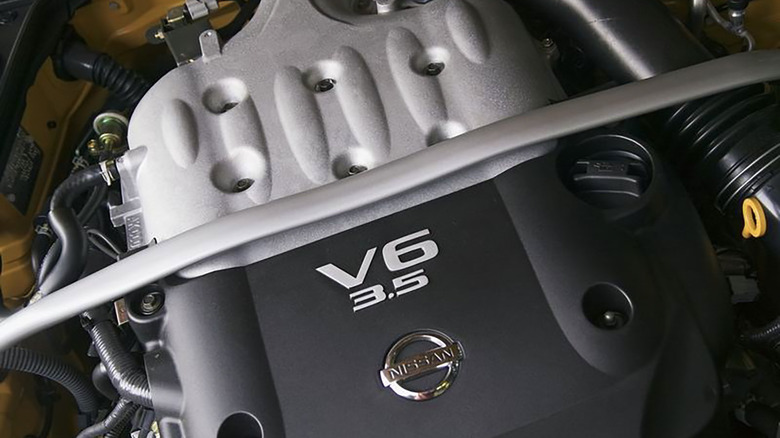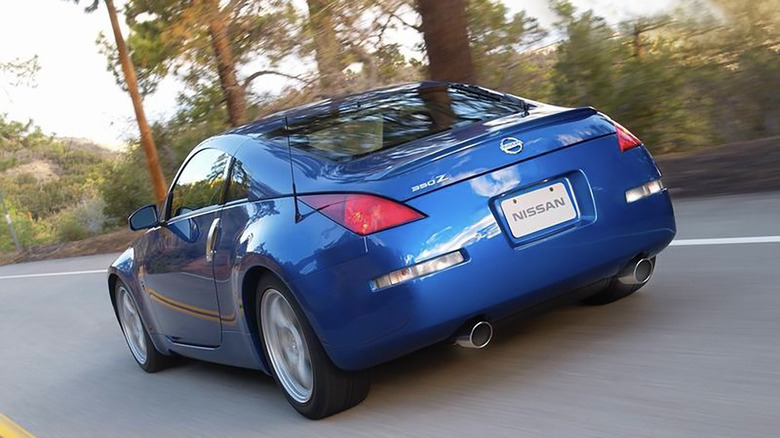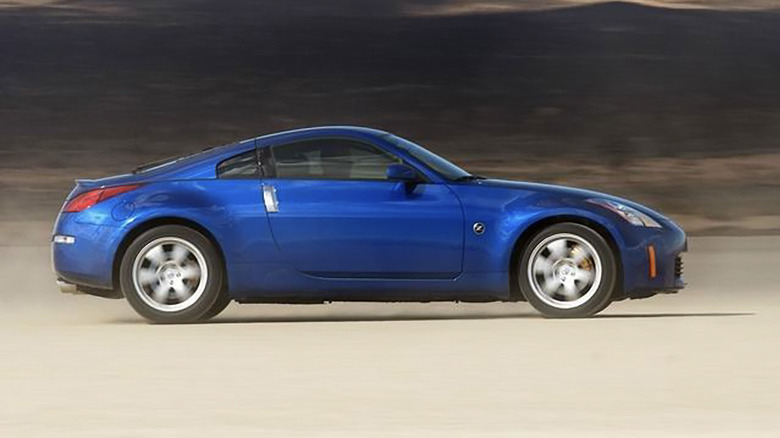What Makes The Nissan 350Z Engine So Good?
Many sports cars are defined by their engines, and the Nissan 350Z easily makes that list. The "350" part of its name suggests the engine's cubic capacity, which is 3.5 liters, and the "Z" part symbolizes that it is part of Nissan's line of Z-badged six-cylinder coupes that includes the 240Z, 260Z, 300ZX, and the 370Z.
When the 350Z was launched back in 2002, it was seen as a major departure from the style and design of its predecessors, but it also quickly gained fans, specifically for the way it looked. But its engine also played a large part in the attraction to this car; it was formidable straight from the factory, and even more powerful if modified, which is easy to do.
The engine is a 3.5-liter naturally-aspirated quad-cam V6 bearing the internal designation VQ35DE; variants of it were used in other Nissan (like the Skyline R34) and Infiniti vehicles. In stock form in the 2002 Nissan 350Z, the VQ35 engine made 287 horsepower at over 6,000 rpm, and peak torque was rated at 274 pound-feet (371 Nm), while at 4,800 rpm.
These stats allowed the 350Z to accelerate from a standstill to 60 mph in under six seconds, a respectable figure for a car launched over two decades ago. However, the 350Z's engine is still sought after by enthusiasts even today for the ease with which it can be modified to gain a lot more power than stock, as well as its bustling aftermarket scene.
Great in stock form
Enthusiasts appreciate this 3.5-liter engine for its instantly recognizable V6 warble that will leave car fans in no doubt as to what they are hearing. Whether the engine is in a Nissan or an Infiniti, if you've heard one once and paid attention to the sound (preferably coming from a car with a freer-flowing exhaust that helps bring out some of the more guttural notes), then you won't forget it.
Driving a Nissan 350Z with a stock engine is a hugely enjoyable experience. The engine isn't especially powerful, but it pulls cleanly all the way to its stock redline of 6,500 rpm, and thanks to variable valve timing, it also feels torquey lower down in the revs when you're just cruising around.
Nissan revised the engine in 2006 and bumped up its power to 309 horsepower, which arrived higher at 6,800 rpm instead of 6,200 rpm, and torque also went up slightly. The biggest news with this updated version of the VQ35DE was that you could rev it even higher, to 7,500 rpm before the rev limiter kicked in.
Good for extracting more power
Just like the VQ30DE engine that it replaced, the VQ35DE could take a lot more power than stock, and you didn't necessarily have to resort to forced induction to achieve it. Granted, the majority of big-power VQ35 builds feature aftermarket turbocharger setups (either single- or twin-turbo), and some are even equipped with a supercharger.
MotorTrend modified one of these engines about 10 years ago and managed to extract a measured 362 horsepower at the wheels without using forced induction. To achieve this figure, they used a set of custom camshafts that altered the valve timing, improved the engine's throttle response, and even altered the V6's sound signature, making it sound remarkably similar to a racing car.
With a twin-turbo setup, the VQ35DE can easily be pushed to above 500 horsepower, but if you want any more than that, you will also need to look at upgrading the engine's internals. You will need forged pistons and con rods, a strengthened crankshaft, high-performance engine bearings, uprated cylinder heads with special gaskets, and you may also need professional balancing of the engine done at a specialist shop (preferably one that specializes in race cars, especially if you want to push the engine toward the 1,000-horsepower mark).


